- Scott Mckeating
- Albums and Singles
Mike Connolly’s Failing Lights project has been pretty hit-and-miss to date, maybe more miss than hit if truth be told. Some of the material’s been known to sit in a bleak rut for ten minutes at a time, gathering little more than bedsores and buboes. This is a much more active and interesting listen, taking the wrecked ambient avenue into more together territory.
Like all his best material away from Hair Police and Wolf Eyes the sound here is so debased that it’s almost organic. The cracked beetle shell static that he gets from pushing his equipment that one nudge further is all over Black Breath. Moving through four loosely defined mini-suites, from whistling lulls and fire extinguisher storm clouds, he stops along the way to produce queasy melody buzzes. This is an unexpected grounding of his style; it’s as if he’s been Kafkaed into a purple syrup-supping Bee. The only time this tape gets on the expectedly aggressive tip is the feedback electric spit of the second piece, lightning ripping from his fingers like Palpatine with cramps. If your pink spray painted side refuses to play, don’t panic, it’s the black side that carries the music. It is a very apt choice.
Read More
- Lucas Schleicher
- Albums and Singles
Blossoming Noise
Thurston Moore plays on this record; maybe the Sonic Youth kids can appreciate that. And the band's name is a bit humorous, so maybe all the hip kids will catch on to that and praise the band's "down to earth" front. Then they'll stumble over French names, time travel narratives, an art for the sake of art cover, and bad sound collage and wonder what the hell is going on. I know irony is the new black and that hypocritical cynicism is the best way to win an argument these days, whoever you're arguing with, but nobody is going to convince me that it's worth trying to decode all the nonsense this group has layered into their release for Blossoming Noise. I'm a fan of whacky concepts, but this seems to be less whacky than it is absolutely unintelligible. If the liner notes are to be taken seriously at all, then everything on this record consists of sounds from previous releases by To Live and Shave in L.A. and are remixed in some fashion so as to capitalize on this concept of assassination and literary history. I don't buy it for a second and, after listening to nothing but electronic chirping for an hour or so, I'm not sure how many people will.
I love it when weird bands that have consumed too much acid over the years play with electronic devices. There's always a certain childishness to their work and, if that's missing, a fairly warped picture of the universe supported by a librarian's knowledge of the occult, the underground, or the otherwise ignored. What I do not like is when someone pretends to be just like that and ends up spitting out an hour's worth of wormy noise that doesn't belong together or doesn't fit together in the first place. Anyone can make a bunch of noise and act as though they've just completed a masterpiece: just slap some stupid arty machinery in the background and maybe some people will be fooled! After trying to find some redeeming quality to this record, I'm convinced it doesn't exist. Machine noise, some static, and some really repetitive analog sound bounce around without any sense of intrigue and eventually end in a wash of yelled vocals, half-dead pulsation, and static. The album is consistently flat, even when it attempts to juice things up, such as on "1643." No amount of turning the volume up to eleven will make anything on this record worth hearing.
Read More
- Administrator
- Albums and Singles
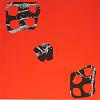 I thought I was in for an exciting trip with the first few minutes of this reissue. "I See You Pan" has a fascinating sound: like popcorn popping but all the kernels are made of stainless steel. It is noise but in a quiet and dynamic way. Alas my enjoyment of things wasn’t to last when the vocals and organ arrive.
I thought I was in for an exciting trip with the first few minutes of this reissue. "I See You Pan" has a fascinating sound: like popcorn popping but all the kernels are made of stainless steel. It is noise but in a quiet and dynamic way. Alas my enjoyment of things wasn’t to last when the vocals and organ arrive.
Paw Tracks
This reissue of Hollinndagain is totally unnecessary and of interest only to those obsessed by Animal Collective. It is evidence for the idea that just because a band has a released a limited edition and very out of print recording, it’s not always good practice to make it available to the masses. The singer sounded like Thom Yorke singing Can, a most unpleasant thought unfortunately realized on this album. This and the following two songs are taken from a radio session but despite this they don’t sound particularly well recorded; there is an awful lot of hum and hiss which, even during my highly under funded college radio days, was unacceptable from a live in-house session. All three pieces are monotonous and mind-numbingly repetitive, void of spirit and emotion.
The four songs that close the album are taken from various live performances. A couple of them make the somewhat dodgy sounding radio session sound like a glossy million dollar production. “Pumpkin Gets a Snakebite” sounds woeful, like it was recorded through a payphone outside the venue. I expect this sort of quality from 10th generation bootleg tapes but not from a release like this.
The performances themselves are average at best and to be honest, I’d be embarrassed to release them if I was Animal Collective. They need all the help they can get to hide the cracks of mediocrity that plague them, Hollinndagain turns these cracks into gaping fissures. There’s no finesse, skill or promise to their playing. The attempts at building up an atmosphere on “Lablakely Dress” are laughable as they make elements that have been used by other artists before to great effect into hideous clichés.
While I can cope with Animal Collective's studio recordings, ropey live recordings of lacklustre performances are nothing but a test of my patience.
samples:
Read More
- Administrator
- Albums and Singles
 Joanna Newsom has abandoned the constraints of pop framework and has created a masterpiece for voice, harp, and orchestra. Ys consists of only five songs yet they stretch between seven and 17 minutes, all of which are extensive fairytales without choruses, refrains, and rarely a repeating motive.
Joanna Newsom has abandoned the constraints of pop framework and has created a masterpiece for voice, harp, and orchestra. Ys consists of only five songs yet they stretch between seven and 17 minutes, all of which are extensive fairytales without choruses, refrains, and rarely a repeating motive.
Everything on Ys is over-the-top, from Newsom's storytelling and flawless playing to the lush orchestral arrangement by Van Dyke Parks to the immense packaging. Downloaders are seriously missing out on the joy of unwrapping the colorful, stunning embossed outer sleeve to reveal the 32-page booklet with gold leaf on the edges. I couldn't get over how arresting this was the first time I opened it. It demanded my attention and the music has lived up to the expectations set by the casing.
Sharing the name with a mythical sunken French city, the lyrics to the songs on Ys are presented like chapters of a story, however it's either like an Exquisite Corpse of sorts, shifting as the music does from various tempos and melodies, or it's all connected in some way that my mind can't quite wrap itself around. In the 12-minute opener "Emily," Joanna calls out to a friend who is gone. In a dream, she promises that she will commit all the stars that Emily has taught her to verse, where later on she longs for her to come home. "Monkey & Bear" is completely unrelated as far as I can tell: a tale of two escaped circus animals who don't know how to survive in the wild but have developed an unnatural love for each other. "Sawdust & Diamonds" is a longform poem, far more abstract than anything else on the album, and perhaps the prettiest piece, stripped down to only Newsom's vocals and harp. "Only Skin," on the other hand, comes within inches of being 17 minutes, and is easily the most deluxe song on the album, with numerous changes throughout the song, wind instruments, banjo, multitracked vocals, percussion, even and Bill Callahan of Smog (but only in really small doses). On the final song, "Cosmia," Joanna has come full circle, calling out to another friend who has gone.
Singer-songwriters with folk tendencies have told stories before, pop musicians have included 16+ minute songs on their albums before (usually nestled in between the rest of the easily digestable singalongs), but there's a remarkable originality on Ys that makes it difficult to find any reference point. Newsom has also done something that her male counterparts usually fail at when tackling a concept this rich with remotely nerdy technique and classical lore, and that's making it enjoyable. Not only is this one of the most technically rich releases this year it is also by far one of the most entertaining.
samples:
Read More
- Lucas Schleicher
- Albums and Singles
Blossoming Noise
All but one of the album's five songs are violent, furious swathes of ear-damaging noise. Anyone who's heard a few Japanese noise records will at least half-know what to expect: lots of white noise or static, gargling metallic explosions, feedback, and maybe some percussive licks of non-rhythm. The other half of the equation, maybe the unpredictable part, is the band's ear for texture and tension. Despite the repetitive, almost unrelenting nature of the noise, there is plenty of variation to be found in American Band's presentation. They may not employ the most original formula in the world, but their willingness to try out different approaches within the same song comes with an upshot: it's hard to know what's coming and when. The background might be Japanese at heart, but there are some distinctive American flavors at work in American Band's debut.
The most impressively unhinged music lay within the two live tracks included. The group proudly declares their name and then begins to rupture every speaker in the house, sparing no expense where volume, intensity, and sheer nastiness are concerned. These are not, however, the best representatives for the band's sound. Thankfully both "First Time in Heels" and "General's Lament" contain elements of restraint and order in a way that I think Wolf Eyes fans would appreciate. For all the indistinguishable cosmic noise American Band fling around, there are recognizable constituent elements that keep their first album from being bogged down by the same old noise attack. Whether the wail of a guitar is necessary or the quiet, brooding circularity of synthetic tones and sheet metal are deemed appropriate, the band is able to provide plenty of dynamics that keep the album moving.
Just as many great noise makers have realized, variation is often the key to drawing listeners in, especially those of us who can't stomach exclusively non-stop, rape-sound recordings. With the amount of open space available on some of these tracks, it's a bit surprising some sort of rhythmic element didn't show up at some point. A track like "Terrified" would really benefit from such a convention. The stuttering, blazing bits of noise at the end practically beg for an accompaniment, but never get one.
I'm usually drawn between hating noise albums and absolutely loving them. This one, however, has me somewhere in the middle. I'm impressed by the band in some ways, but find their creativity lacking, their identity almost non-existent. On the other hand, there are some quality cuts of sound on this album and some of it shows promise: there's always the chance this stuff will only get better. I'll probably listen to this here and there, but I'm anxiously awaiting the band's next effort because that one will decide whether or not they can step up from out of the crowd and capitalize on their willingness to explore.
Read More
- Matthew Amundsen
- Albums and Singles
 This latest EP from Freddie Ruppert, aka This Song Is a Mess But So Am I, is captivating from the beginning with its deconstructed beats, rants, and an abundance of distortion thrown in every direction.
This latest EP from Freddie Ruppert, aka This Song Is a Mess But So Am I, is captivating from the beginning with its deconstructed beats, rants, and an abundance of distortion thrown in every direction.
Part of the charm is that the songs have so much chaos yet never fall apart because the rhythm churning underneath and the vocals keep things in place. Nor does it hurt that the songs are not purely free-form and are actually about something. While some lingering issues remaining from his mother’s death appear on the disc, he also takes the time to chastise a music critic on "Is This Childish Enough Sean Ford?" and react to a friend’s conversion to over-the-top Christianity on "Congratulations!" The only instrumental is an exploratory untitled track, and is notable for its introspection amidst other songs that prove consistently exuberant and intoxicating.
On this EP, Ruppert manages to turn dense layers of distortion into works of heavy beauty.
Read More
- Administrator
- Albums and Singles
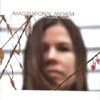 Not only can a Various Artist collection succeed thematically, but it can shine due to a curator's impeccable taste, and Imaginational Anthem 2 is a nearly flawless collection. Whereas the first volume featured acoustic guitarists from the past and present, this volume seems more forward-looking, slightly more focused on the newer guitarists who have their future stretching out in front of them.
Not only can a Various Artist collection succeed thematically, but it can shine due to a curator's impeccable taste, and Imaginational Anthem 2 is a nearly flawless collection. Whereas the first volume featured acoustic guitarists from the past and present, this volume seems more forward-looking, slightly more focused on the newer guitarists who have their future stretching out in front of them.
Tompkins Square
Youngster James Blackshaw opens the disc with his echoing, shimmering 12-string bliss. If there's anybody left who hasn't got this year's O True Believers yet, it's time to. "River of Heaven" is appropriately titled. Jose Gonzales' nylon string plucking has a very distinct style that is warm and inviting, and I recognize his talent but I can't help but think his best songs are all cover tunes and his fan base are due to TV commercials. His song, "Suggestions," is a short instrumental piece which is endearing and pleasant.
Peter Long, Jesse Sparhawk, and Michael Chapman all provide beautiful pieces, but the lightning fingered mayhem of the 1975 recording of Fred Gerlach's "Devil's Brew," the following atypical tuning and playing of Christina Carter's "Ascend Mem," and the hillbilly speed of Billy Faier's "New World Coming" are standout tracks, more because they're so unique in this collection when pared with the more introspective and calm pieces of the other players.
Jack Rose's bit, "Cross the North Fork II" is the strong and bright music his fans have come to worship but while Sharron Kraus' "Looking for the Hermit's Cave" is a nice tune, it seems like she's included simply because of her legendary status and this certainly isn't one of her top notch moments. The collection ends with a live +10 minute recording of Robbie Basho from 1969 courtesy of Glen Jones (featured on volume one), and while it's a poor recording it's an illuminating glimpse at 37-year-old evidence of acoustic guitarists unbound to the folk/pop framework which seems to have blossomed again only recently.
At 12 songs, I feel this is enough—any more would be overkill. With any luck, more Imaginational Anthem volumes will follow, as there are constantly new artists emerging and there's a vast sea of important guitarists to tap in to. My only vote for the next round would be to finally give somebody like Andreas Martin his due!
samples:
- James Blackshaw - River of Heaven
- Jesse Sparhawk - Light Cycle/Tetrahedra
- Jack Rose - Cross the North Fork II
Read More
- Administrator
- Albums and Singles
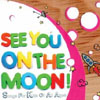 I strongly feel that Various Artist compilations are both fun and useful but it's always good to have some kind of underlying theme. This one succeeds in concept, and a fantastic concept it is, but the contents end up taking it down a few notches.
I strongly feel that Various Artist compilations are both fun and useful but it's always good to have some kind of underlying theme. This one succeeds in concept, and a fantastic concept it is, but the contents end up taking it down a few notches.
I found this while flipping through a various artists section at a record store. I was surprised I hadn't even heard of this collection but picked it up seeing some names I liked and some I was interested in hearing. (More specifically, my initial reaction was "wow, I finally get a recording of Low's "Be Nice to People With Lice.") Artists like Mark Kozelek, Rosie Thomas, Junior Boys, and Hot Chip grace this disc, which conceptually would make a great present from any of us music nerds to friends/family we have who have kids. I'd rather be influencing young kids to get into some modern rock music than give them nonsense from Teletubbies or something.
What works on this collection is songs like "24 Robbers" by Apostle of Hustle and the title track by the Great Lake Swimmers. The former is a rope jumping song refitted with some big bumping beats while the latter is an original song about growing up to be a veterinarian, astronaut, or farmer. These are happy songs that "kids of all ages" can truly enjoy. (I actually now am inspired to try and gather a collection of camp songs or rope skipping songs by modern acts so lookout!) The title track is a positive message with plenty of "moo moo moo"s and "meow meow meow"s that people can sing along to and learn quickly and easily. Unfortunately, there's a few more stinkers on the disc.
Sufjan Stevens is talented, yes, but this depressing Jesus crap that he shat out for this comp is not only mopey and slow, but it effectively rules out any kids who aren't Christians, or, more specifically, Christians who give a rat's ass about the birth. Broken Social Scene has taken an already bleak kids song "Puff the Magic Dragon" and made it slower and more sad. Thanks guys. Rosie Thomas is talented and has a gorgeous voice, but kids I know just don't like sleepy folk music - they want to be singing along, dancing and clapping! Hot Chip and Kid Koala don't even do much for the cause, either, and the disc pretty much slips into a coma without any more uplifting stuff.
I'd like to see another collection like this at some point, but a little more focused. Pick a function or a theme: are they songs for babies trying to get them to sleep or for toddlers to clap along to on car rides? For now, the people who will get the most pleasure out of this collection, sadly remains adults.
samples:
- Great Lake Swimmers - See You On the Moon
- Apostle of Hustle - 24 Robbers
- Broken Social Scene - Puff the Magic Dragon
Read More
- Administrator
- Albums and Singles
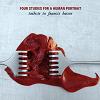 As tribute albums go, one dedicated to a painter is not something I’ve encountered before. Being a fan of Francis Bacon, I was very excited to hear this album but alas half of it is useless. The other half though is great although only one of the four tracks really nails the feeling that I get from looking at one of Bacon’s paintings.
As tribute albums go, one dedicated to a painter is not something I’ve encountered before. Being a fan of Francis Bacon, I was very excited to hear this album but alas half of it is useless. The other half though is great although only one of the four tracks really nails the feeling that I get from looking at one of Bacon’s paintings.
Vital
Oddly, for a tribute to a visual artist with each track being devoted to one of his paintings, there are no pictures of the paintings included with the album, just details of where to find them online. A couple of them I wasn’t familiar with so I had to search for them (and to save you the bother I’ve linked to all of them). The imagery that does appear on the sleeve is a very shallow representation of Bacon’s work. Photos of what looks like liver being pulled apart on a stainless steel surface doesn’t do any justice at all to Bacon’s visceral and hallucinogenic creations. A far better option would have been to include reproductions of the paintings themselves.
Musically the album starts off poor and gets better. Henrik Nordvargr Björkk’s tribute to “Portrait of a Cardinal (1955)” starts off very ropey, completely missing the drama of the painting. It does eventually synch up with the stark, dark imagery of the painting but too often it lapses into boring “eerie” soundscapes. Most annoyingly it sounds like it is just cut off at the end, like Björkk couldn’t be bothered to finish off properly. Contagious Orgasm’s homage to “Fragment of a Crucifixion (1950)” is a better attempt at capturing Bacon in sound but it still doesn’t go all the way. The beginning of the piece (a juxtaposition of normal day to day noises with stomach churning wet, meaty noises and distant voices that could be in pain or in pleasure) is a great audio representation of the painting. About three minutes in there is a rapid shift in style with some cheesy horror soundtrack music which kills the mood entirely. Bacon deals in cold, stony drama not in melodrama. When the cheap horror music stops the previously creepy sounds become completely ineffective; a shame as the piece started off so promisingly.
Hentai’s interpretation of “Painting (1946)” is more like what Bacon’s thoughts might sound like. For the first few minutes it is nothing special; the sound of rotating machinery mainly but then there is an almighty explosion of noises that perfectly sums up the cacophony of hellish imagery that Bacon employs in his piece. Lasse Marhaug’s “Figure in Movement (1978)” is a good piece on its own but I don’t think it fits well with the fluid moving figure in Bacon’s painting. The stop/start jerkiness of the music is totally at odds with the liquid motion of the visuals. I do like the music though but I think it would be better suited to one of Bacon’s other paintings (like the “Portrait of a Cardinal” mentioned earlier).
It’s a good concept for a compilation and a worthy artist to pay tribute to but unfortunately Four Studies for a Human Portrait isn’t as good as it could have been. I really like the last two pieces included but I’d hesitate to recommend the album on that basis as the first two pieces are so disappointing. However, for anyone with an interest in Francis Bacon, this is worth checking out just to see what other people think the paintings sound like.
samples:
- Henrik Nordvargr Björkk - Portrait of a Cardinal (1955)
- Contagious Orgasm - Fragment of a Crucifixion (1950)
- Hentai - Painting (1946)
Read More
- Administrator
- Albums and Singles
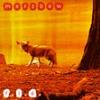 Every time I think I’m done with Merzbow he releases an album that grabs me by the face and screams “LISTEN TO ME!” F.I.D. (standing for Fur Is Dead) is one of those albums. It is powerful and burly but surprisingly not as brain drilling as usual. The chaos normally unleashed is instead channelled into a droning, pulsing muscle. This is one of the most exciting Merzbow releases I’ve heard yet.
Every time I think I’m done with Merzbow he releases an album that grabs me by the face and screams “LISTEN TO ME!” F.I.D. (standing for Fur Is Dead) is one of those albums. It is powerful and burly but surprisingly not as brain drilling as usual. The chaos normally unleashed is instead channelled into a droning, pulsing muscle. This is one of the most exciting Merzbow releases I’ve heard yet.
Fourth Dimension Records
With six long pieces spread across two discs, F.I.D. is intimidating to say the least (I dread to think how I’d feel if left in a room with the Merzbox!). It’s nice to see that Merzbow isn’t past it. There are times when I think about what more can he do with noise and indeed many of his recent albums are pedestrian at best. I often think that it’s time for him to slow down and restrict himself to only albums of such gut-wrenching quality as this one. Although the thoughts of him adjusting his releases around a signal-to-noise ratio is not something I expect to come true. By the very nature of his music I suppose it makes perfect conceptual sense to release everything and introduce as much noise into the system as possible.
The stronger material is mainly on the first disc, the first two pieces of the album are chunky behemoths of noise. “Exteriorization?@No.1” erupts with a sheet metal shredding screech that would make an amplified scrap yard blush. Low rumbles make it feel like an avalanche but instead of rocks it is chunks of steel covered in electrified barbed wire falling down the cliff. It’s exhilaratingly heavy; the heaviness enhanced by what sounds like a loop of processed carnival music appears about halfway through.
“Forest of Kelp” begins with an incredible drone that reminds me some of Coil’s work with drones, particularly the more aggressive stuff like Constant Shallowness Leads to Evil. As a piece taken on its own, it’s one of the best things by Merzbow that has ever crossed my path and is undoubtedly where F.I.D. peaks. It fleshes out to a freakout of howls that change in pitch like the most satanic guitar solo never played, it is stunning. The final piece of the first disc is like the afterbirth of “Forest of Kelp;” it pales in comparison although the final few minutes of massively amplified metal percussion is a sure fire cure for hearing.
The second disc doesn’t always reach the levels of pure energy on the first but it is still a commendable effort on Merzbow’s part. “Exteriorization?@No.2” opens the disc with an arctic blast of white noise. It is a strong start to the disc and, along with “Forest of Kelp” from the previous disc, it is a sure sign that there’s life in the old noise machine yet. I think I’ve used up most of my adjectives in describing how colossal this album sounds but “Exteriorization?@No.2” is a towering pillar of rage converted to an audio signal. Unfortunately the momentum of the album is lost with the next piece, “Transition,” and F.I.D. doesn’t get back on form properly albeit there are some nice sparks of noise peppering the last piece, "Kongara," but it seems more like a rehash of some of the earlier material without the punch.
As his animal rights views move more to the forefront of his music and artwork (this album is in aid of PETA) and as his convictions on the matter seem to be becoming more resolute, there is more fire entering his music. In years to come I think the last two years or so will be seen as the start of Merzbow’s second wave of terror. There are still some awful releases of his being crapped out on demand but the amount of good albums seem to be on the rise. F.I.D. along with some of his more beat orientated albums (and the odd choice collaboration) make me not want to abandon the good ship Merzbow just yet as I hope he continues on this furiously intense path. Even if he doesn’t, this album is enough to keep me going for a long, long time.
samples:
Read More
- Administrator
- Albums and Singles
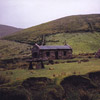 You can either be wowed by the fact that this is his first piano/vocal LP in a series of 54 LPs, or by the fact that this is one of the outstanding releases of the year; this should be a compulsory listen either way. It’s unfortunate that the Jandek myth has swollen to such a ridiculous size that it’s coming between people wanting to hear the music. Those cranky elitist fucks that obsess over their reclusive prodigious artist are going to shit the bed over this double CD.
You can either be wowed by the fact that this is his first piano/vocal LP in a series of 54 LPs, or by the fact that this is one of the outstanding releases of the year; this should be a compulsory listen either way. It’s unfortunate that the Jandek myth has swollen to such a ridiculous size that it’s coming between people wanting to hear the music. Those cranky elitist fucks that obsess over their reclusive prodigious artist are going to shit the bed over this double CD.
As with his previous two chronologically released live albums, Alex Neilson (percussion) and Richard Youngs (bowed upright bass) back him up, but this time he’s on piano instead of six strings. Gone is the harsh, serrated guitar sound and in comes a Satie-esque minimalist playing style. But where Satie’s lines are built on, and out of, melancholy and remembrance these bare piano lines seem to be more of the now, than of the past. This almost recital technique of playing is simple and endearing, but steers well clear of amateurism. Sometimes across the two discs the melody can seem incomplete, but that’s part of the design. The whole thing is one long suite split into nine parts (and a prelude); an extended selection of thoughts moving around a subject.
Vocally, he’s ditched the elongated howls for a spoken word style, it’s as if the words are carrying more weight than usual and are demanding this pronounced style. Like the vast majority of Jandek’s lyrics, they seem to work even better when read; the guy needs to drop a collection of prose in-between the next hail of LPs. The rumours that this release, subtitled The Cell, is Jandek dealing with / exploring a recent encounter with cancer, are totally validated by the lyrics. Buzzwords like ‘body,’ ‘blood,’ ‘virus,’ ‘cells,’ ‘result,’ and ‘mitochondria’ seem to raise their heads out of these songs about hope lost and found. When he says "I crashed and burned and phoenixed out of there," it seems to be fit the idea of discussing remission in a lengthy narrative precisely. Unfortunately, every now and again he slips into "Lucy in the Sky with Diamonds" Shatner-isms, trying to force too much intensity into some lines.
Again the lack of credit for Alex Neilson (percussion) and Richard Youngs is a poor move, if he can be arsed to credit the venue then he should credit the two guys he played with. Neilson concentrates on bells and bowed cymbals, refusing rhythm and giving a very involved and delicate performance. There are some great moments where Youngs in particular totally syncs up with Jandek’s runs, his undercurrent of bass bows providing superb counter melodies.
It’s these live records that are pulling Jandek into the light, and I applaud the gall of the man to shatter his own myth by coming out. People have laminated and endlessly chased their tails over his non-story until the whole thing is just another redundant hook to hang the music on. These live discs are opening a whole other life for Jandek. Newcomers absolutely can start with this ongoing series of live releases, jump aboard here and feel free to totally disengage from the fanfare and whispers of his myth. Fuck the saga of the lone Texan; enjoy the music.
samples:
 
Read More

